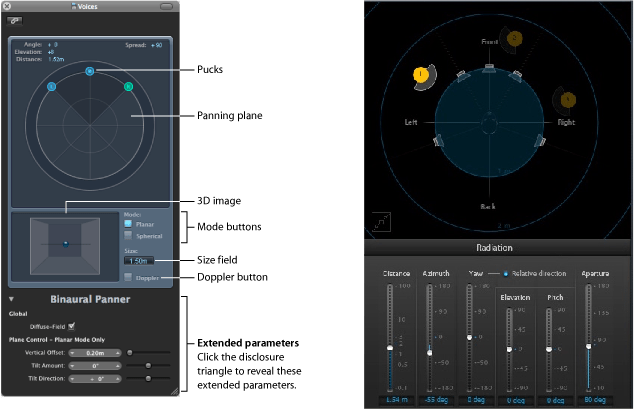We have now completed the first round of testing on the system we’ve been developing for our AHRC Digital Transformations “Transforming Transformation” project. Full results will be available in due course through peer-reviewed publication, but in summary we conducted a system usability and user experience (UX) study involving 14 participants from target user groups. The participants were asked to perform a set of common tasks with both our prototype system and Logic Audio’s Binaural panner (below).
Initial results were very promising, and showed that our test participants responded positively to the experience of our system. In particular, they were better able to to understand the relationship between tasks and actions with our system, and they found the system more “attractive”, “stimulating” and “novel” than the existing system. However, the tests did highlight a number of problems with the system, which are consistent with our own observations. Specifically:
- The visual display is placed too far away, and is too small to create a sense of “immersiveness”. This is partly due to the Kinect sensor needing to be at least 1.4m away for accurate motion capture.
- Participants found the spheres difficult to grasp (they tended to “miss” the spheres by grabbing “in front” of them within the space) even though they found it obvious that they needed to grasp them
- There was some confusion about how physical space related to virtual space. Some participants when asked to place the sound “behind” them in virtual space, tried to place the sound behind their head in physical space rather than at the back of “cube” representing the space in front them
Our next steps will be to write up our findings in formal publications to gain feedback, and to begin to address these issues, in the first instance by adding haptic feedback to the system design.
